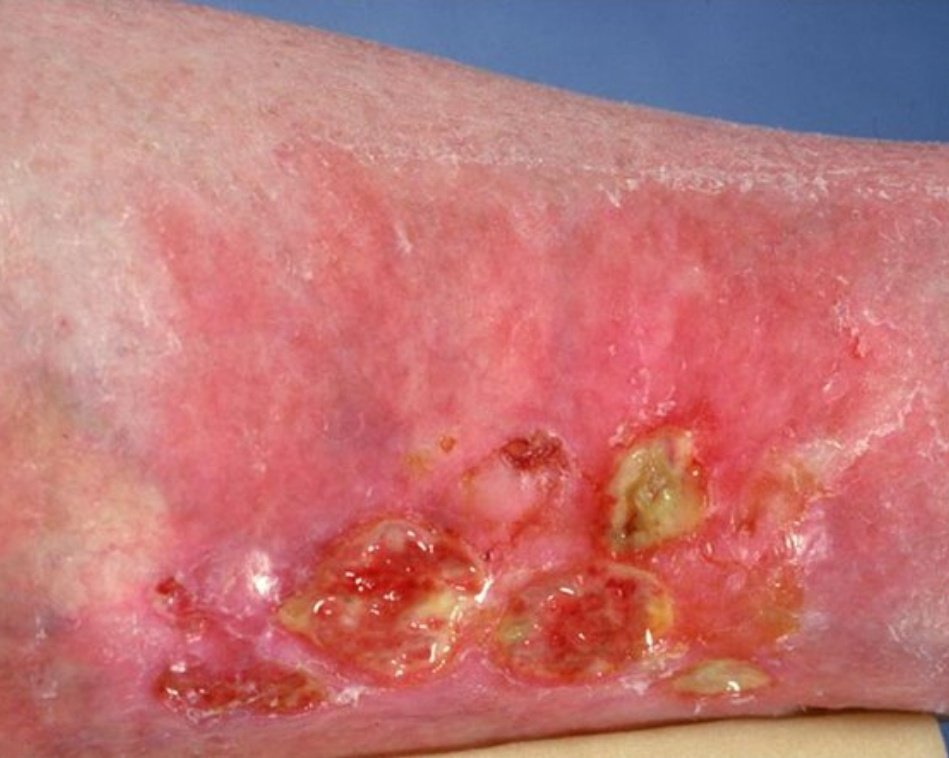
Aspergillosis (disease spectrum, Dx, Rx):
1. Refers collectively to all invasive and allergic disease caused by aspergillus species
2. A.fumigatus: causes most of the invasive & chronic aspergillosis & allergic disease
3. A.flavus: sinus, cutaneous infection & keratitis
1. Refers collectively to all invasive and allergic disease caused by aspergillus species
2. A.fumigatus: causes most of the invasive & chronic aspergillosis & allergic disease
3. A.flavus: sinus, cutaneous infection & keratitis
4. A.niger: otitis externa
5. It's a hyaline, septate branching mold
6. Risk factors: neutropenia, glucocorticoid use, CGD, severe influenza or Covid-19, COPD, pulmonary TB, infliximab, ibrutinib use, ECMO
7. Invasiv: pulmonary, sinusitis, cutaneous, endocarditis, cerebral
5. It's a hyaline, septate branching mold
6. Risk factors: neutropenia, glucocorticoid use, CGD, severe influenza or Covid-19, COPD, pulmonary TB, infliximab, ibrutinib use, ECMO
7. Invasiv: pulmonary, sinusitis, cutaneous, endocarditis, cerebral
8. Chronic pulmonary aspergillosis(CCPA) : single or multiple cavities in upper lobe, a/w fatigue, weight loss, hemoptysis, prior lung disease like TB etc, untreated can cause fibrosis & destroyed lung
9. Aspergilloma: fungal ball. A/w CPA.
9. Aspergilloma: fungal ball. A/w CPA.
10. Chronic aspergillus sinusitis: fungal ball of the sinuses, chronic invasive sinusitis, chronic granulomatous sinusitis
11. ABPA: hypersensitivity reaction to A.fumigatus. can be seen in pt of asthma & CF. Eosinophilia, high serum total IgE, high Aspergillus-specific IgE
11. ABPA: hypersensitivity reaction to A.fumigatus. can be seen in pt of asthma & CF. Eosinophilia, high serum total IgE, high Aspergillus-specific IgE
12. Allergic fungal rhinosinusitis
13. Superficial disease: keratitis, otitis externa, onychomycosis
14: Dx on invasive disease: imaging, antigen detection (galactomannan), PCR, microscopy showing septate hyphae with branching, histopath showing angioinvasion, necrosis, Culture
13. Superficial disease: keratitis, otitis externa, onychomycosis
14: Dx on invasive disease: imaging, antigen detection (galactomannan), PCR, microscopy showing septate hyphae with branching, histopath showing angioinvasion, necrosis, Culture
15. Dx of CCPA: imaging & high aspergillus specific antibody
16. ABPA: high total & aspergillus specific IgE. T/t with antifungal & glucocorticoid.
17. Invasive disease: preferred are voriconazole, isavuconazole & posaconazole. Ampho B as 2nd line. TDM of voriconazole level
16. ABPA: high total & aspergillus specific IgE. T/t with antifungal & glucocorticoid.
17. Invasive disease: preferred are voriconazole, isavuconazole & posaconazole. Ampho B as 2nd line. TDM of voriconazole level
18. CCPA: oral voriconazole, itraconazole, posaconazole. TDM of itraconazole.
19. BAE for hemoptysis. Surgical debridement in endocarditis, brain abscess, fungal ball.
20. Prophylactic posaconazole in high risk pt undergoing chemotherapy effective in reducing infection rates.
19. BAE for hemoptysis. Surgical debridement in endocarditis, brain abscess, fungal ball.
20. Prophylactic posaconazole in high risk pt undergoing chemotherapy effective in reducing infection rates.
@AaronGoodman33
@NicoGagelmann
@nihardesai7
@aekdkk
@DoctorBhavsar
@arunraja4u
@BijoyTelivala
@knowmedge
@Drshantanu2110
@DrVinay118
@BrownHospMed
@infinity4UAll
@yajadev
@Sreenath_Sree
#MedTwitter
#IDTwitter
#medicine
#mycology
@NicoGagelmann
@nihardesai7
@aekdkk
@DoctorBhavsar
@arunraja4u
@BijoyTelivala
@knowmedge
@Drshantanu2110
@DrVinay118
@BrownHospMed
@infinity4UAll
@yajadev
@Sreenath_Sree
#MedTwitter
#IDTwitter
#medicine
#mycology
• • •
Missing some Tweet in this thread? You can try to
force a refresh





